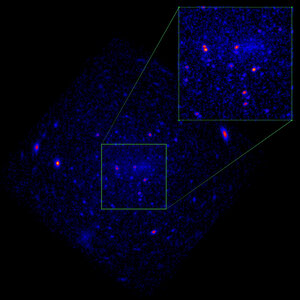Accept all cookies Accept only essential cookies See our Cookie Notice

About ESA
The European Space Agency (ESA) is Europe’s gateway to space. Its mission is to shape the development of Europe’s space capability and ensure that investment in space continues to deliver benefits to the citizens of Europe and the world.
Highlights
ESA - United space in Europe
This is ESA ESA facts Member States & Cooperating States Funding Director General Top management For Member State Delegations European vision European Space Policy ESA & EU Space Councils Responsibility & Sustainability Annual Report Calendar of meetings Corporate newsEstablishments & sites
ESA Headquarters ESA ESTEC ESA ESOC ESA ESRIN ESA EAC ESA ESAC Europe's Spaceport ESA ESEC ESA ECSAT Brussels Office Washington OfficeWorking with ESA
Business with ESA ESA Commercialisation Gateway Law at ESA Careers Cyber resilience at ESA IT at ESA Newsroom Partnerships Merchandising Licence Education Open Space Innovation Platform Integrity and Reporting Administrative Tribunal Health and SafetyMore about ESA
History ESA Historical Archives Exhibitions Publications Art & Culture ESA Merchandise Kids Diversity ESA Brand Centre ESA ChampionsLatest
Space in Member States
Find out more about space activities in our 23 Member States, and understand how ESA works together with their national agencies, institutions and organisations.
Science & Exploration
Exploring our Solar System and unlocking the secrets of the Universe
Go to topicAstronauts
Missions
Juice Euclid Webb Solar Orbiter BepiColombo Gaia ExoMars Cheops Exoplanet missions More missionsActivities
International Space Station Orion service module Gateway Concordia Caves & Pangaea BenefitsLatest
Space Safety
Protecting life and infrastructure on Earth and in orbit
Go to topicAsteroids
Asteroids and Planetary Defence Asteroid danger explained Flyeye telescope: asteroid detection Hera mission: asteroid deflection Near-Earth Object Coordination CentreSpace junk
About space debris Space debris by the numbers Space Environment Report In space refuelling, refurbishing and removingSafety from space
Clean Space ecodesign Zero Debris Technologies Space for Earth Supporting Sustainable DevelopmentLatest
Applications
Using space to benefit citizens and meet future challenges on Earth
Go to topicObserving the Earth
Observing the Earth Future EO Copernicus Meteorology Space for our climate Satellite missionsCommercialisation
ESA Commercialisation Gateway Open Space Innovation Platform Business Incubation ESA Space SolutionsLatest
Enabling & Support
Making space accessible and developing the technologies for the future
Go to topicBuilding missions
Space Engineering and Technology Test centre Laboratories Concurrent Design Facility Preparing for the future Shaping the Future Discovery and Preparation Advanced Concepts TeamSpace transportation
Space Transportation Ariane Vega Space Rider Future space transportation Boost! Europe's Spaceport Launches from Europe's Spaceport from 2012Latest

A puzzle of 10 million stars
Thank you for liking
You have already liked this page, you can only like it once!
When observed with the unaided eye, Omega Centauri, the object in this image, appears as a fuzzy, faint star. But the blue orb we see here is, in fact, a collection of stars – 10 million of them. You cannot count them all, but in this sharp, beautiful image you can see a few of the numerous pinpoints of bright light that make up this unique cluster.
The image was taken by Wouter van Reeven, a software engineer at ESA's European Space Astronomy Centre near Madrid, Spain, during his recent visit to Chile to observe the July total solar eclipse. From his home base in Spain the cluster only grazes the horizon, making it near-impossible to image, but from the La Silla Observatory in Chile it was high in the sky, presenting the ideal opportunity to photograph it.
Omega Centauri is a picture-perfect example of a globular cluster: tightly bound by gravity, it has a very high density of stars at its centre and a nearly perfect spherical shape (the name ‘globular cluster’ comes from the latin word for small sphere, globulus). It lives in the halo of the Milky Way, at a distance of about 15 800 light years from Earth.
As other globular clusters, Omega Centauri is made up of very old stars and it is almost devoid of gas and dust, indicating star formation in the cluster has long ceased. Its stars have a low proportion of elements heavier than hydrogen and helium, signaling they were formed earlier in the history of the Universe than stars like our Sun. Unlike in many other globular clusters, however, the stars in Omega Centauri don’t all have the same age and chemical abundances, making astronomers puzzle over the formation and evolution of this cluster. Some scientists have even suggested that Omega Centauri may not be a true cluster at all, but rather the leftovers of a dwarf galaxy that collided with the Milky Way.
Omega Centauri is also special in many other ways, not least because of the sheer number of stars it contains. It is the largest globular cluster in our galaxy, at about 150 light years in diameter, and is also the brightest and most massive of its type, its stars having a combined mass of about four million solar masses.
Omega Centauri can be seen with the naked eye under dark skies and imaging it doesn’t require long exposure times. To create the composition we see here, Wouter combined eight images taken with an exposure time of 10 seconds, seven images of 30 seconds each and another seven images of 60 seconds each. He used a SkyWatcher Esprit 80 ED telescope and a Canon EOS 200D camera.
-
CREDIT
ESA/CESAR/Wouter van Reeven -
LICENCE
CC BY-SA 3.0 IGO or ESA Standard Licence
(content can be used under either licence)

Globular cluster Omega Centauri imaged by Einstein Probe

Hubble's view of Omega Centauri (cropped)

Wide-field of Omega Centauri and its surroundings (D…

Hubble's view of Omega Centauri















 Germany
Germany
 Austria
Austria
 Belgium
Belgium
 Denmark
Denmark
 Spain
Spain
 Estonia
Estonia
 Finland
Finland
 France
France
 Greece
Greece
 Hungary
Hungary
 Ireland
Ireland
 Italy
Italy
 Luxembourg
Luxembourg
 Norway
Norway
 The Netherlands
The Netherlands
 Poland
Poland
 Portugal
Portugal
 Czechia
Czechia
 Romania
Romania
 United Kingdom
United Kingdom
 Slovenia
Slovenia
 Sweden
Sweden
 Switzerland
Switzerland
























